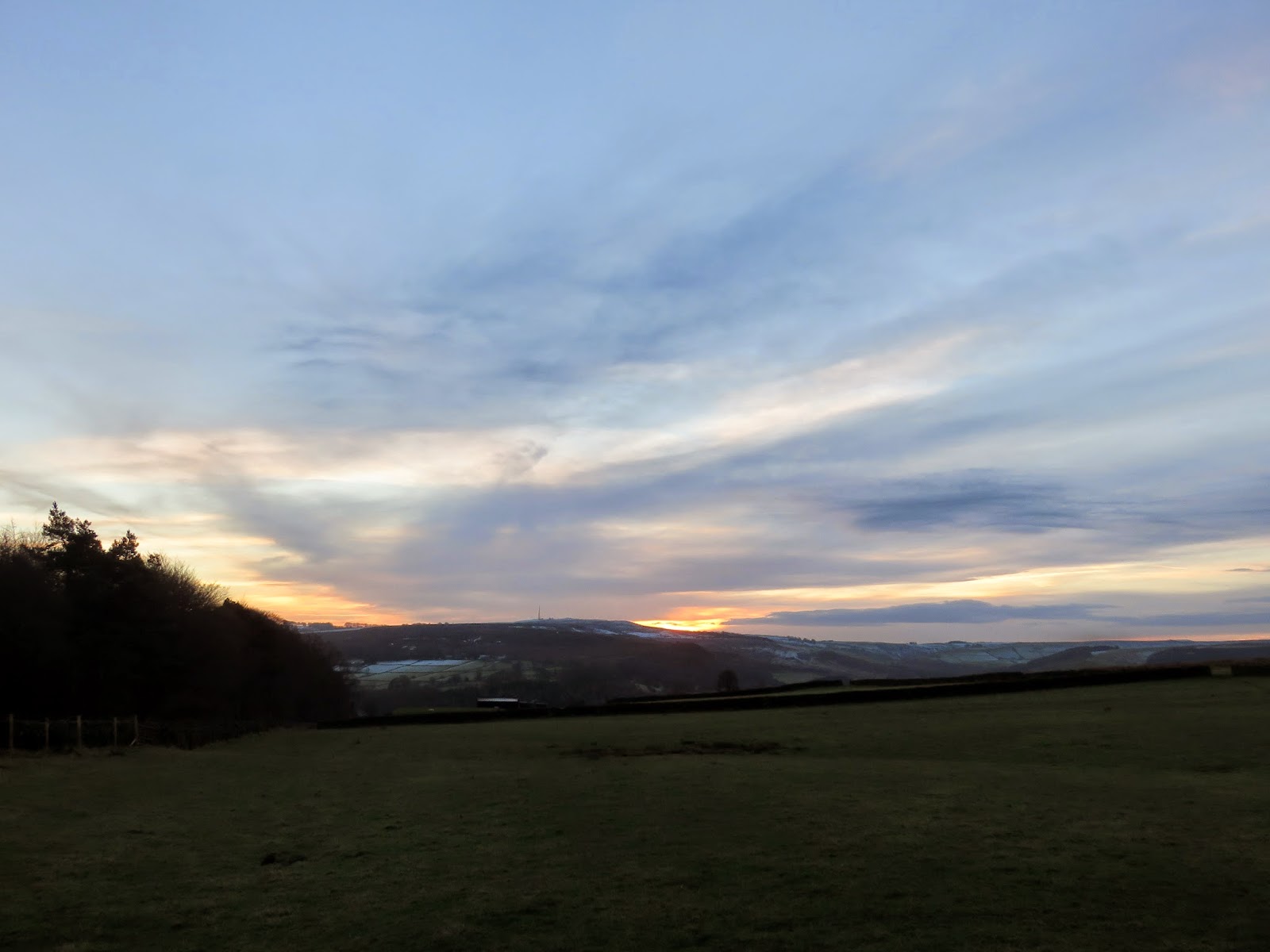This map was created using GPS Visualizer's do-it-yourself geographic utilities.
Please wait while the map data loads...
Date: 13/12/2014
From: Cutthroat Bridge
Parking: Layby on A57
Start Point: Moscar Lodge
Region: Peak District Dark Peak
Route length: 10.4 miles (16.7 km)
Time taken: 04:31
Average speed: 2.3 mph
Ascent: 443m
Descent: 576m
Summits on this walk: High Neb (458m)
Other points of interest: Long Causeway, Robin Hood's Cave, Cowper Stone, Mother Cap, Over Owler Tor
I've walked along Stanage Edge a number of times and I'm sure that doesn't come as a surprise to anyone reading this. That said, however, I have yet to complete two tasks associated with the gritstone escarpment; the first being to walk the entire length of it and the second to visit its highest point, High Neb. Having access to two cars certainly helped in this matter as we were able to plan a one-way winter walk that achieved both of those previous omissions.
For those of you who might not be aware of what or where Stanage Edge is, it sits just west of Sheffield near the village of Hathersage. It's fairly safe to say that it could be one of the most popular locations to visit within any of the National Parks in the UK. Stanage (from the old words for "stone edge") runs four miles north from the prominent Cowper Stone to Stanage End. It is the northernmost of an almost continuous line of cliffs that includes Burbage Rocks, Froggatt Edge, Curbar Edge, Baslow Edge and Birchen Edge. It is a magnet for walkers, runners and perhaps most importantly, climbers.
The planned route for the day would start at a large layby on the A57, a loop of the old road before it was widened and straightened close to the alarmingly named Cutthroat Bridge. At the time of planning, this seemed the most appropriate place to park, given its size, however it means an abhorrent mile-long tramp along the A57 while dodging the speeding traffic. It appears now, with all the benefits of hindsight, that it is possible to park almost directly next to the bridleway of the Sheffield Country Walk, where we were finally allowed to leave the confines of the road and strike out onto open moorland.
 |
| The only entertainment along the roadside - some frozen leaves |
 |
| A bright winter morning over Derwent Moors |
 |
| The bridleway (Sheffield Country Walk) leading up from the A57 |
 |
| WW represents William Wilson who owned Hallam Moor |
 |
| Parts of the disused quarries at Stanage End |
 |
| The beginnings of Stanage Edge from Stanage End |
 |
| A panorama over the Derwent Moors towards Kinder Scout and the Hope Valley |
 |
| Large parts of the path were frozen solid |
 |
| A look north along Stanage Edge |
 |
| The view towards Kinder |
 |
| Sara overlooking Moscar Moor and Bamford Moor |
 |
| Grouse watering hole number 12 |
 |
| Grouse hole number 22 after our attempts to vandalise it |
 |
| The growing magnificence of Stanage Edge close to High Neb |
 |
| Another one of the curious watering holes, number 10 this time |
 |
| The trig pillar at High Neb |
 |
| Abandoned millstones litter the moorland below |
 |
| The view along Stanage Edge from High Neb |
 |
| A hazy Derwent Valley |
 |
| Stanage Edge |
 |
| Paragliders making the most of the weather |
 |
| The Long Causeway is approximately half way along the ridge |
 |
| The view north from The Long Causeway |
 |
| The Long Causeway |
 |
| Stanage Edge in the early afternoon sun |
 |
| The view across Bamford Moor towards Win Hill |
 |
| Some more impressive rockiness |
 |
| The entrance to Robin Hood's Cave is beneath the large, lintel-like slab of rock |
 |
| Sheer rock walls define the southern end of Stanage Edge |
 |
| Climbing towards the trig pillar at the southern end |
 |
| The OS pillar |
 |
| The view north from the second trig pillar |
 |
| More abandoned millstones |
 |
| The Cowper Stone |
 |
| Heading out onto Burbage Rocks - Stanage Edge can be seen on the horizon |
 |
| Self-portrait - or 'selfie' - from Burbage Rocks |
 |
| The sun had disappeared behind a bank of clouds |
 |
| Carl Wark and Over Owler Tor |
 |
| Burbage Rocks |
 |
| Burbage Rocks |
 |
| Burbage Rocks once again, once the sun had come out again |
 |
| The valley of Burbage Brook below Higger Tor |
 |
| Burbage Rocks from afar |
 |
| Carl Wark and Higger Tor |
 |
| Higger Tor |
 |
| The disused quarry near the main road |
 |
| Sara contemplating the setting sun |
 |
| The unnamed woodland at Burbage Bridge |
 |
| Burbage Brook |
 |
| Burbage Brook once more |
 |
| We were grateful for the warning |
 |
| The route up to Over Owler Tor |
 |
| Sun setting over Eyam Moor |
 |
| The path up to Mother Cap |
 |
| Mother Cap silhouetted |
 |
| Sun set over Eyam Moor |
 |
| Sara inspects Over Owler Tor |
 |
| The view into the Derwent Valley from Over Owler Tor |
 |
| The rocks of Over Owler Tor |
 |
| Higger Tor viewed from the south |
 |
| More sunset action |
 |
| Heading through the woods back to Hathersage |
 |
| The final throes of daylight |

Very good photos I visited here today
ReplyDelete